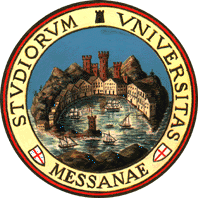 801-900
801-900 


The foundation of the University of Messina dates back to the XIII century with the establishment of a School of Law. Over the centuries the University underwent through turmoil, facing challenges and evolutions. In 1838 the University was finally refunded by King Ferdinando II. The earthquake in1908 destroyed a great part of the University structures, including its famous library and the scientific equipment. But only a year later in 1909 the Faculty of Law was reopened, while the Faculties of Science, Pharmacy and Medicine reopened in the years 1914/15. In the following decades the University of Messina enriched its academic offer with the establishment of the Faculties of Arts and Humanities, Economics, Education, Engineering, Political Science and Veterinary Medicine. After the reform of the Italian University System (Law240/2010) the University of Messina includes 21 Departments, covering the widest range of disciplines: Department of Environmental Science, Territorial, Food and Health Security (S.A.S.T.A.S.); Department of Cognitive Science, Education and Cultural Studies; Department of Paediatric, Gynaecological, Microbiological and Biomedical Sciences; Department of Biological and Environmental Sciences; Department Human Pathology; Department of Electronic, Chemical and Industrial Engineering (DIECII); Department of Veterinary Sciences; Department of Economic, Business and Environmental Sciences and Quantitative Methodologies; Department of Juridical Science and History of the Institutions Department of Chemical Science; Department of Human and Social Science; Department of Law; Department of Neurosciences; Department of Physics and Hearth Science; Department of Clinical and Experimental Medicine; Department of Biomedical Sciences and of Morphologic and Functional Images; Department of Experimental Medical-surgery Science, Specialist and Odontostomatologic Science; Department of Mathematics and Computer Science; Department of Civil, Computer, Construction and Environmental Engineering and of Applied Mathematics (DICIEAMA); Department of Pharmaceutical Sciences and Health Products; Department of Ancient and Modern Civilization. UniMe Departments are located in the main sites of the University: “G. Martino” – University Hospital, Central buildings, “Annunziata”campus, “Papardo” campus. All University sites can be reached by public transport. The Rector represents the University legally and institutionally; he is the head of the University organization. He is responsible for the pursuit of the University's goals based on quality criteria and in compliance with the principles of effectiveness, efficiency, transparency and the promotion of merit. The Vice Rectors cooperate with the Rector in the management of the University. The Academic Senate is the representative body of the university community. It is involved in the general administration of the University and the appointment of the members of the Board of Governors. The Board of Governors is in charge of strategic planning as well as the financial and staff programming of the University. Board established to control the University's accounting and certify the regularity of the its economic, financial and assets management. University Body responsible for the evaluation of the University's teaching, research and administrative activities. In line with the instructions issued by the Board of Governors, the General Director is responsible for the general management and organisation of the University services, resources and technical-administrative staff, as well as the tasks required under the statutory provisions governing public administration management. Rector Prof. Francesco Tomasello, Deputy Rector Prof. Rita De Pasquale, Director General Prof. Francesco De Domenico Since1999, the National Higher Education System, hereby NHES, has been fully reformed so as to meet the aims of the "Bologna process". According to the Italian legislation (DM 270/04), the NHES is now organised in 3 cycles: the 1st cycle academic degree is the “Laurea” which grants access to the 2nd cycle academic degree or 1st level university master. The “Laurea Magistrale”is the main degree of the 2nd cycle. It gives access to 3rd cycle degree programmes resulting either in “Dottorato di Ricerca” (Doctorate research programmes) or in School of Specialization or 2nd level university master. Hence, the structure of the Italian Higher Education System may be reviewed as follows: First cycle bachelor (3 years) Second cycle Master’s degree (2 years) One long cycle degree (5/6 years) First level vocational Master Third cycle research doctorate Specialization Schools Second level vocational Master
 801-900
801-900 
| Subject | Rank |
|---|---|
Food Science & Technology | 101-150 |
Veterinary Sciences | 101-150 |
Pharmacy & Pharmaceutical Sciences | 101-150 |
Agricultural Sciences | 201-300 |
Dentistry & Oral Sciences | 201-300 |
Medical Technology | 201-300 |
Business Administration | 201-300 |
Electrical & Electronic Engineering | 301-400 |